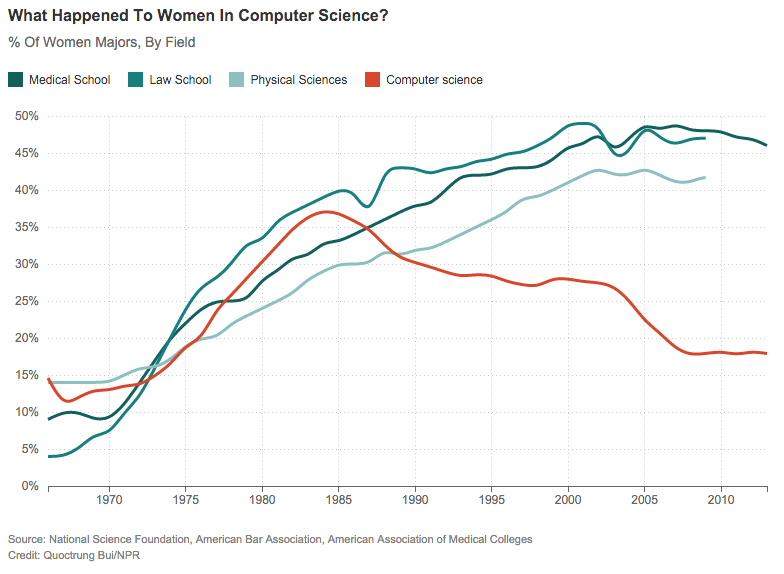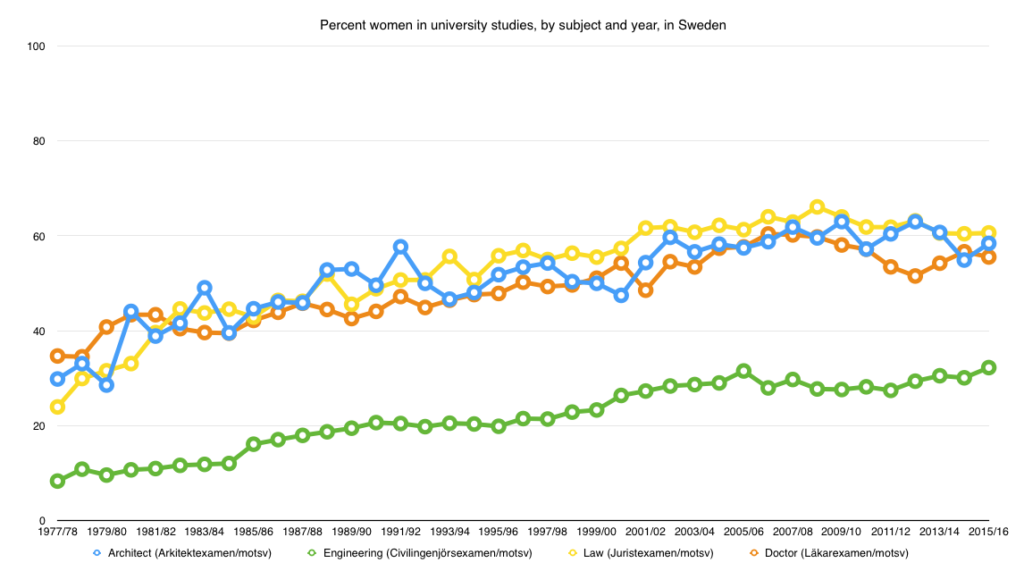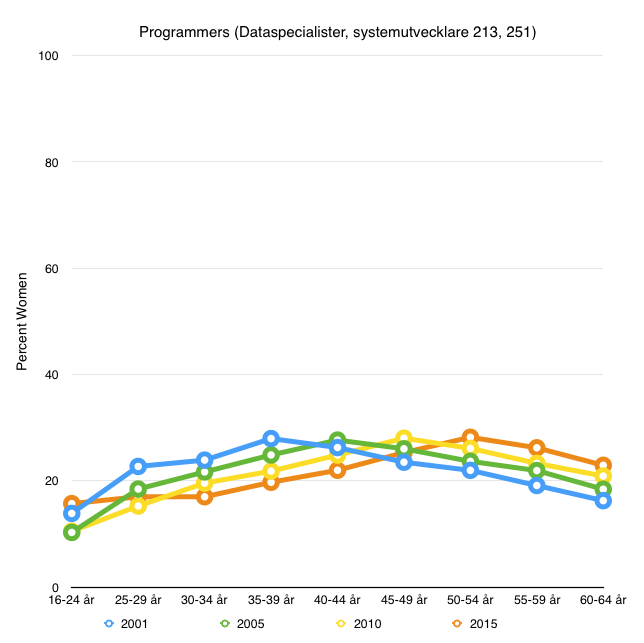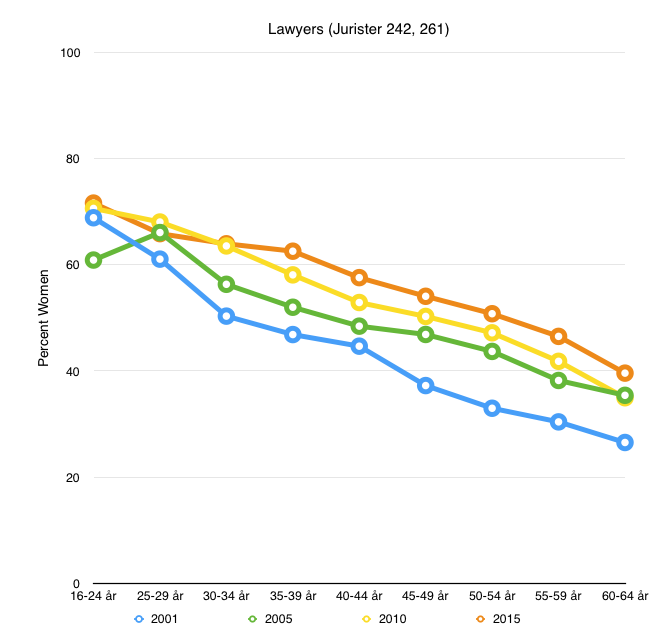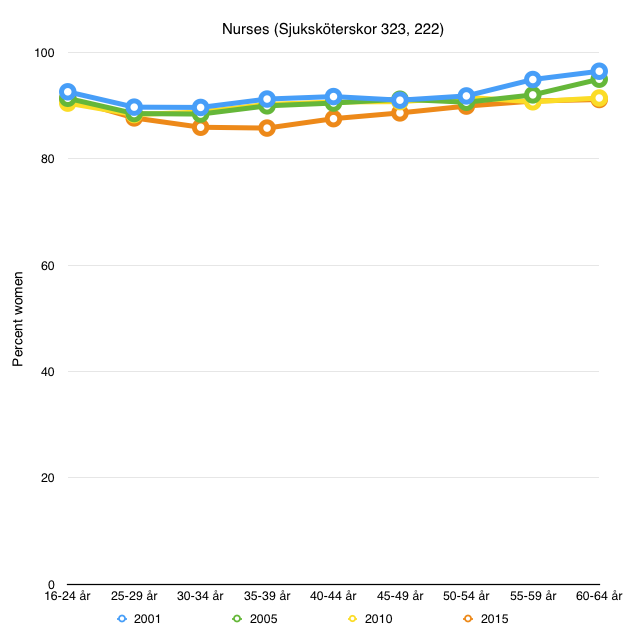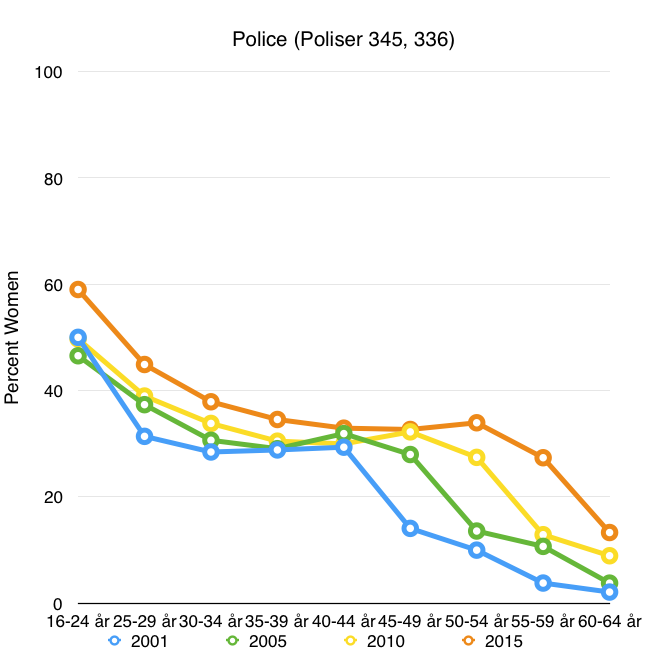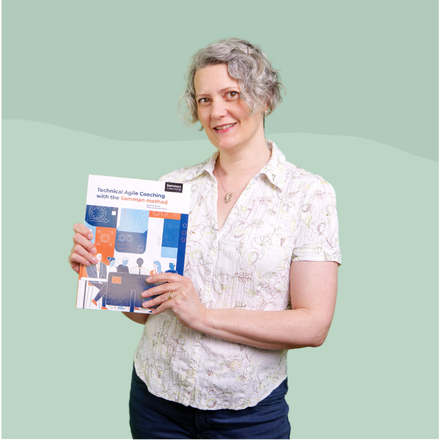As a woman programmer, I have noticed there is something of a gender imbalance in my profession. It’s an issue that’s interested me for a while, not least because people often ask me about what we can do to improve the situation. For myself, I enjoy writing code and I think it’s a great career. The sexism I’ve been aware of has not made a big impact on my life, although I know not everyone has been so fortunate. Susan Fowler’s blog really shocked me earlier this year. I have had some bad experiences, but not like that.
I recently read this article about the history of women in programming, by Birgitta Böckeler. She shows this graph comparing percentage women in different university studies in the US. It’s quite stark:
The percentage of women studying Computer Science suffers a trend reversal in the mid 80’s, while the other subjects don’t. The explanation given, is that it’s about then that home computers began to appear on the market, sold as a toy for boys. I lived through that time, and yes, my family bought a ZX Spectrum in the mid 80’s when I was about 10 years old, and yes, my younger brother learnt to program it and I didn’t. Fortunately I managed to learn to program later on anyway.
All this got me thinking about my current situation. I live in Sweden, and it’s a very different culture than the US. For example, I was reading about the concept of ‘male privilege‘. One of the examples given is that men have the privilege of keeping their name when they marry, while women are questioned if they keep theirs. The thing is, in Sweden, this is not true. Either partner may change their name and it’s not remarkable for them both to keep their original names, or both swap to something entirely different. That’s something of a trivial example, but I do think it is a sign of a wider cultural difference. Privilege is experienced in a social context, and Sweden has a much more feminist society in many ways. (See for example this page about gender equality in Sweden)
So I became curious to see whether the same thing happened in Sweden – did the proportion of women computer scientists also drop in the 80’s? I discovered that the Swedish statistical authority collects and publishes data on this kind of thing, and you can search it via a web gui. I started poking around on it and soon I was hooked. Loads of really interesting data lying around waiting to be analysed!
Here is the plot I came up with, that is showing somewhat equivalent data to the graph on the US that I showed earlier:
(If you want to check my data, I got it from statistikdatabasen.scb.se, from the table “Antal examina i högskoleutbildning på grundnivå och avancerad nivå efter universitet/högskola, examen, utbildningslängd, kön och ålder. Läsår 1977/78 – 2015/16”)
Although the proportion of women in engineering is pretty low compared to the other subjects, it’s encouraging to note that the proportion has increased more than the other subjects. It’s now at a similar level to where doctors, lawyers and architects were thirty-five years ago. (I was disappointed not to find any data for Natural Sciences. I’m not sure why that’s excluded from the source database). Anyway, I’m not seeing this trend change in the 80’s, the curve is fairly smoothly upwards. I suspect the subject breakdown isn’t detailed enough to pick out Computer Science from the wider Engineering discipline, and that could explain it.
So I’ve done some more digging into the data to try to find if there was a turning point in the mid 80’s for aspiring women programmers. I think something did happen in Sweden, actually. This is the graph that I think shows it:
(I’m using the data sources “Anställda 16-64 år i riket efter yrke (3-siffrig SSYK 96), utbildningsinriktning (SUN 2000), ålder och kön. År 2001 – 2013” and “Antal examina i högskoleutbildning på grundnivå och avancerad nivå efter universitet/högskola, examen, utbildningslängd, kön och ålder. Läsår 1977/78 – 2015/16”, the SSYK codes I used are shown in the title of the graph)
If you look at the blue curve for 2001, you can see it peaks at age 35-39 years – that is, there were a higher proportion of women programmers at that age than other ages. If you were 35-39 in 2001, you were probably doing your studies in the mid to late 80’s. Notice that the proportion of women at younger ages is lower. The green and yellow curves for 2005 and 2010 continue to show the same peak, just moved five years to the right. The proportion of women coming in at the younger agegroups remains lower. The orange curve for 2015 is a little more encouraging – at least the proportion of women in the youngest two age-groups has levelled off and is no longer sinking!
So it looks to me like there was a trend change in the mid to late 80’s in Sweden too – the proportion of women entering the profession seems to drop from then on, based on this secondary evidence. I imagine that computers were also marketed here as a boy’s toy. I really hope that things are changing today in Sweden, and that more women are studying computer science than before.
For reference, I did similar curves for several other professions, using the same dataset.
So there are a lot of women lawyers out there, and the proportion looks to be continuing to increase.
Male nurses seem to have things worse than female programmers, unfortunately. Plus I can’t see any real trend in this graph – the situation is bad and fairly stable.
The proportion of women police officers levelled off for a while but they’ve managed to turn things around, and it is now increasing again.
So programming is the only profession I discovered that has this decreasing trend of women participation, even if it has now levelled off. Let’s hope that changes to an upward trend soon – my daughters will by applying to university in about ten year’s time…

